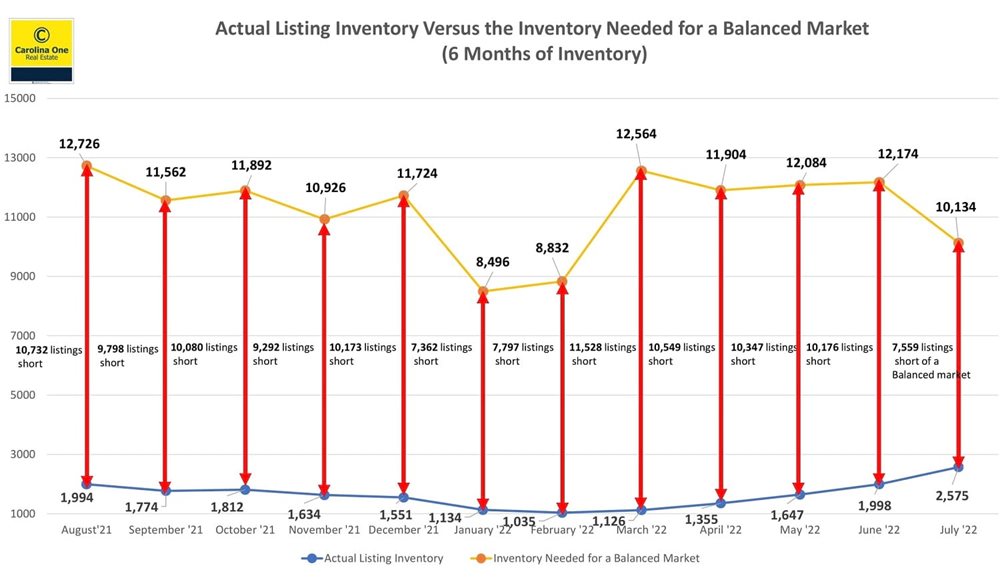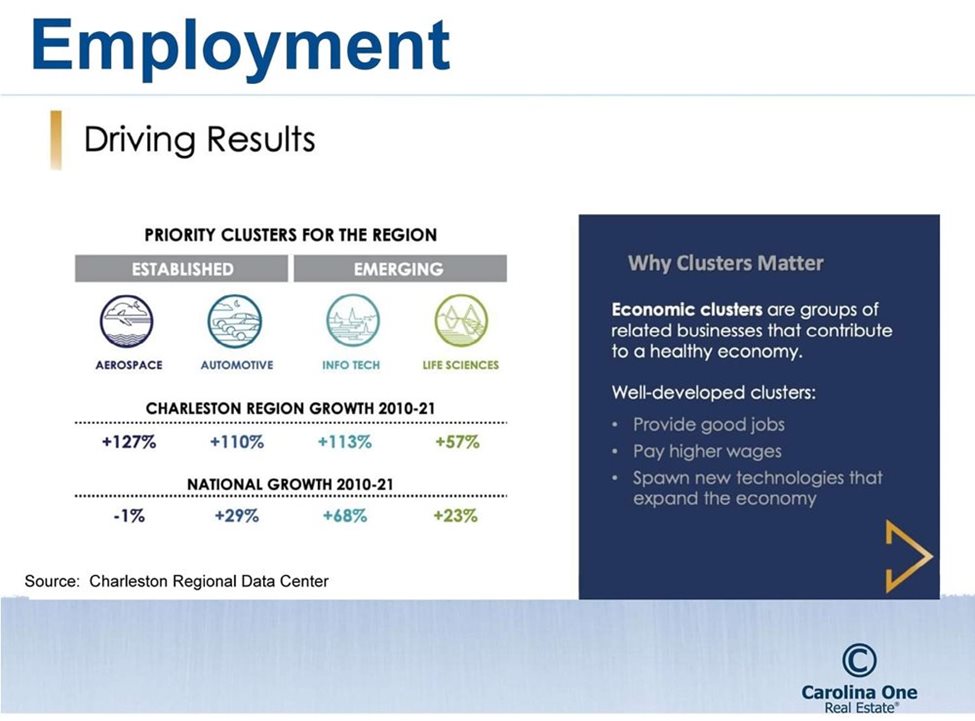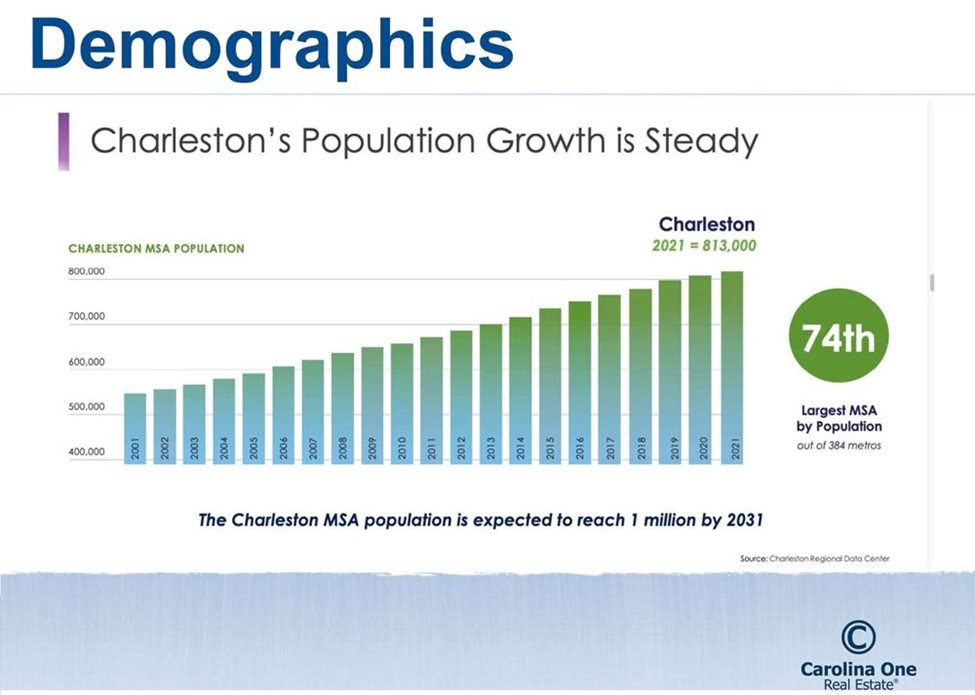September 13, 2022
Categories: Trends
Being in the middle of a sugar spike is a great feeling and over the past couple of years, our local real estate market has been on one. Like any good sugar high, it must come to an end, and we must start the detoxing period, while not fun, it is something we must do to rebalance ourselves. The best thing about detoxing is that it does not last long and when it is over, we feel and think better than while in our sugar high state-of-mind.
For the past 2.5 years, our local real estate market in the greater Charleston region has experienced record highs in home closings, median and average home values and build cycles while also experiencing extreme lows in days-on-the-market, inventory of available homes, and mortgage interest rates. These conditions along with the supply chain issues have created many hurdles and challenges for local real estate professionals, homebuilders, and the many companies that support our industry.
Over the past 90-days, we have entered a market detox period with an increase in mortgage rates that has slowed the rate of homes going under contract thus allowing the supply of available homes to increase. These fundamental adjustments, while unpleasant to many, have been necessary to help us begin the “rebalancing period” of our local real estate market.
So, what makes this a detox instead of a crash of our local real estate market?
While many headlines might suggest we are heading into a housing crash like 2008 - 2010, I disagree with the headlines, and instead would argue we are in the middle of a detoxing period which is more in line with a housing correction instead of a crash. There are several key indicators that I have reviewed supporting my theory.
First, in order to have a crash and thus a depreciation of real estate values, you need an imbalance of supply over demand, in other words, you need more available homes than homes being sold over a period of time. In 2009, the Charleston region had an average yearly inventory of homes just over 10,000 while we only had 8,141 homes that were sold and closed during this year (2009) thus, we had an 8.91% decrease in the median sales price. However, in 2021, we had an average yearly inventory of homes just under 2,000 while we had over 23,000 homes that sold and closed this past year that created a 16.39% increase in the median sales price. My analysis is that we have a long way to go before our market even gets close to a balanced market where we don’t have any gain or loss of home values. A balance market is typically defined when you have around 6 months of housing supply, today, we have around 1.5 months of housing supply in our region.
.jpg.aspx?width=975&height=569)
This above graph illustrates that based on current housing demand; we are 7,559 listings short to reach a balanced market.
Secondly, we have a very diverse and stable job market in our region and job creation is the single most important factor when it comes to understanding the overall housing market. Over the last decade, the Charleston region has exceeded the national average when it comes to employment growth, economic output growth, and real wage growth. Major employers like Boeing, Volvo, and now Walmart are helping attract other industries to the region and create economic clusters which are groups of related businesses that contribute to a healthy economy. This employment growth has moved Charleston into the top 20 metro areas for job growth in the country. When you have solid and sustained job growth, the need for affordable housing grows with it.

Finally, the last indicator I would like to cover of why we are not heading into a housing crash in our local market is the overall desirability of our region. Why did you choose to live here? Weather, Job Opportunity, Retirement, Move Closer to Family, or maybe you can keep your job in another region in our country and can work remote now from here. The population in our region has been steadily growing over the last two decades and we currently have just over 800,000 people living in our local region. Based on many desirable reasons for living here, we are expected to add another 200,000 people over the next 10 years.

In summary, our local market has entered a detox period and I am unsure of how long this will last, but I do strongly believe that once this adjustment period is over, we will continue to be a strong and stable real estate market into the future
This informative post discussing current Charleston Real Estate Market Conditions has been provided to CharlestonNewHomesGuide.com by Will Jenkinson of Carolina One New Homes located in Charleston SC.
Will Jenkinson is the Broker-in-Charge of Carolina One New Homes, a full-service new home sales and marketing operation within Carolina One Real Estate Services with operations in Charleston and Myrtle Beach. Established in 1994, Carolina One New Homes represents developers, regional and local homebuilders throughout the region. Over the last several years, they have added their Land Services Group that helps identify new land opportunities as well as their Custom Homes Group to provide a high level of specialized services to the local custom builders in the region.
Will is responsible for the day-to-day operation with a focus on procuring new business and maintaining current business of the company. He graduated with a Bachelor of Science degree in Business from The Citadel in 1999 and resides in Mt Pleasant with his wife and 3 children. Will has been with Carolina One Real Estate Services since 2000 and has been with New Homes since 2006.
###
Thank you for reading and sharing our articles from The Greater Charleston New Homes Guide. Our business is to know Charleston, SC's new home construction, home builders, neighborhoods, and homes so we may assist you as you take your new construction home journey. Please take the time to explore our site. The Greater Charleston New Homes Guide is considered the best and most reliable ‘local’ resource to new home construction, builders, neighborhoods, and homes throughout the Lowcountry since 2004.
Categories: Trends